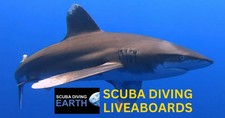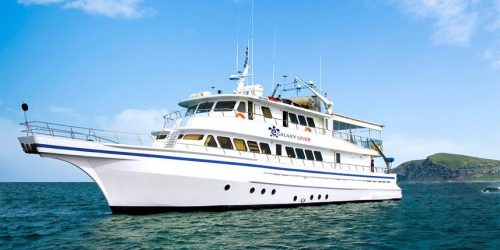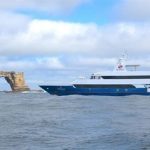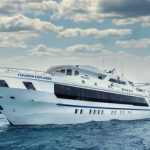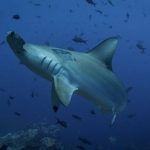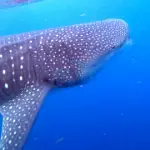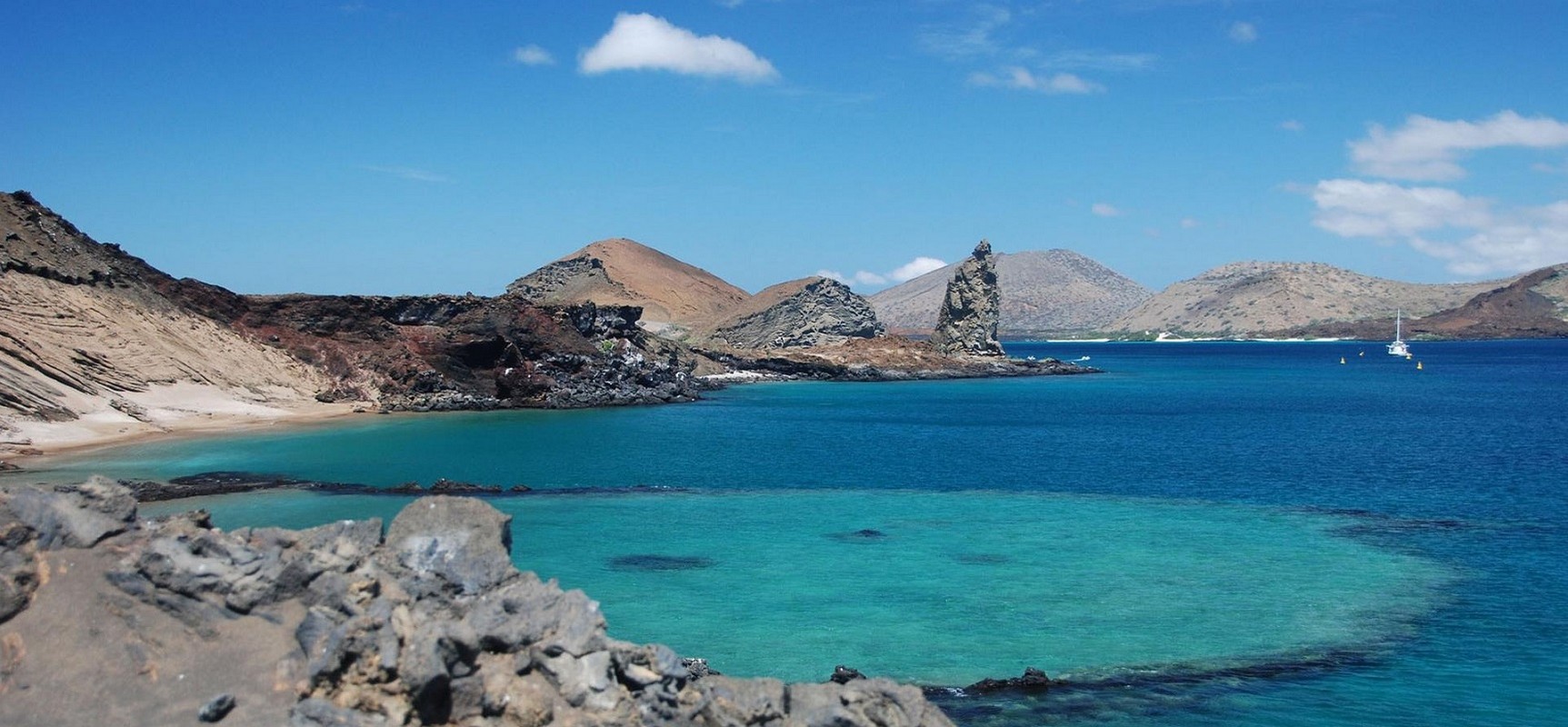
Galapagos Liveaboard Diving
Remote Liveaboard Diving With Schooling Hammerheads, Whale Sharks & Rays
Top Galapagos Liveaboard Destinations
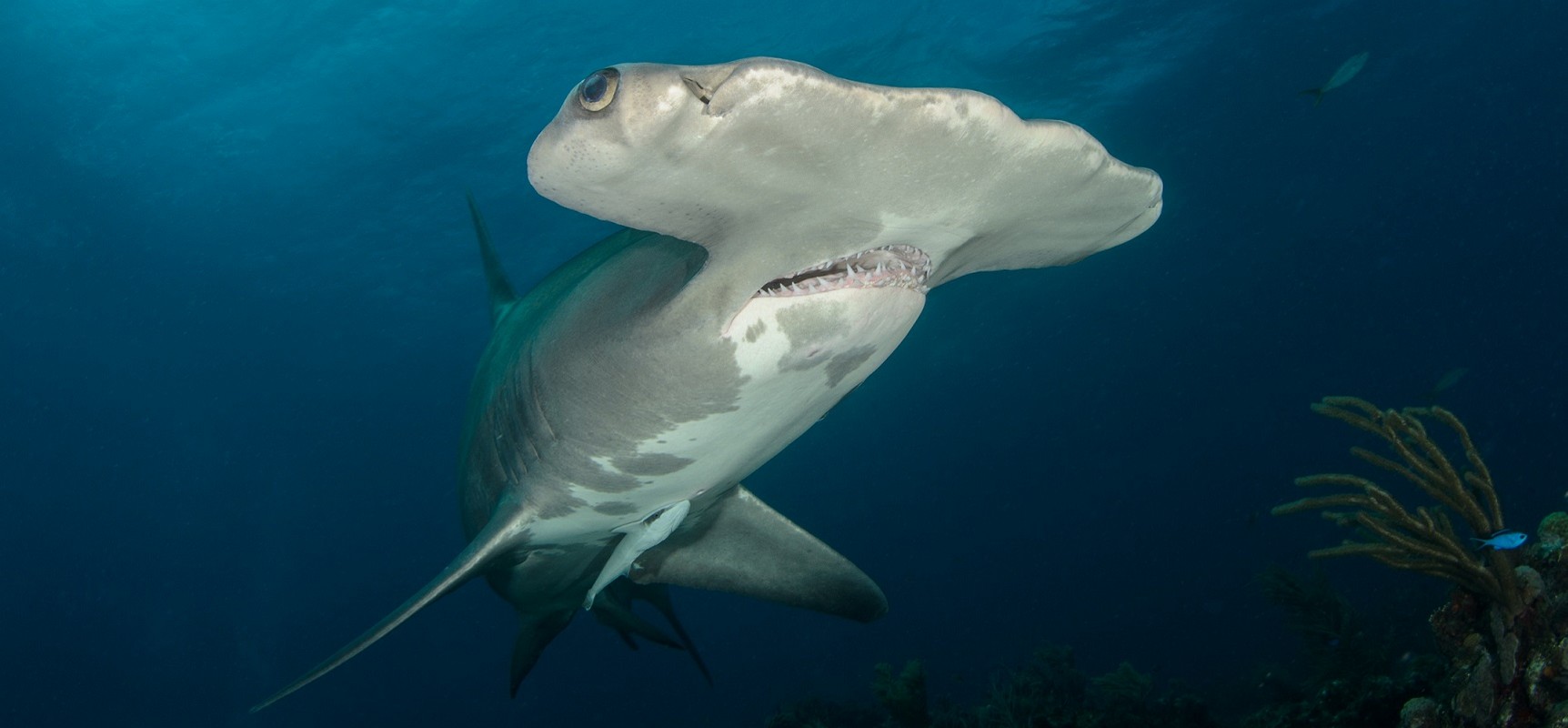
Darwin Island Liveaboards
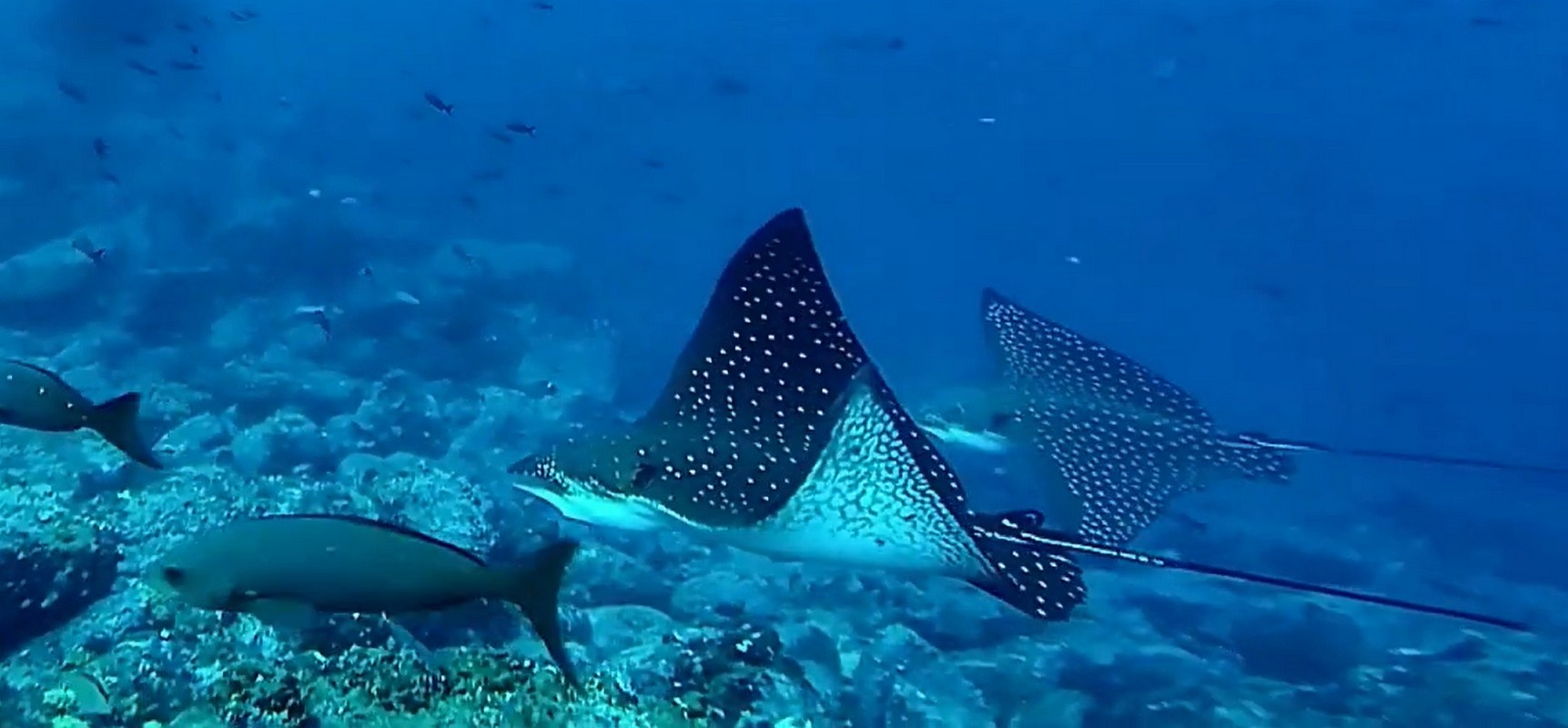
Wolf Island Liveaboards

Darwin & Wolf Island Liveaboards
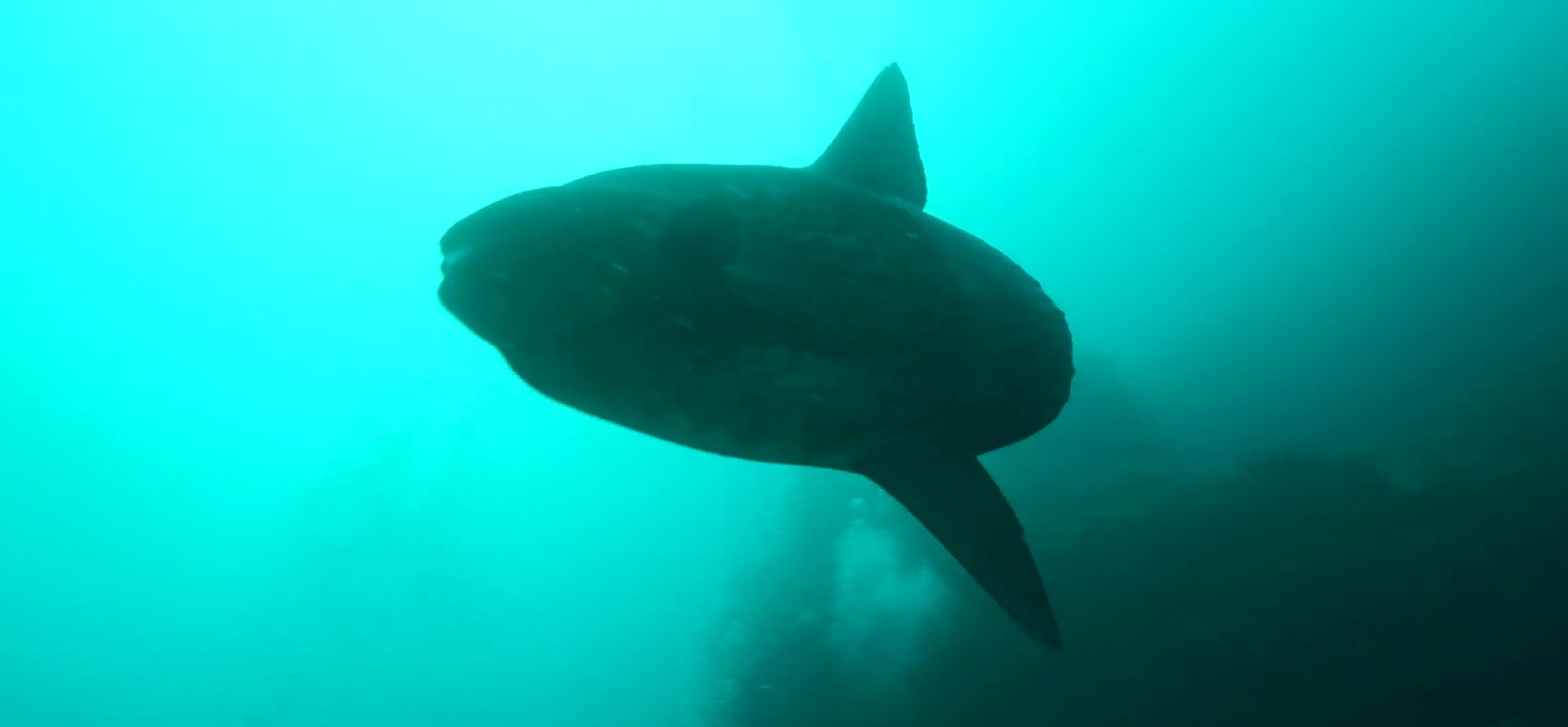
Punta Vicente Roca Liveaboard Diving
Popular Galapagos Liveaboards
| MV Tiburon Explorer; Liveaboard diving in Galapagos; 9.7 out of 10 and is rated 'Exceptional'; from £518, $747, €698/day. Customer Review: ”A truly amazing dive trip! So many highlights – Schools of hammerheads, whale sharks, mola mola, rays and so much more!!! Top level service, great dive guides and crew. Grateful to have met everyone and can’t wait to do it again!” Recommended for: Fantastic diving, great service, super crew. |
| MV Galapagos Master; Liveaboard diving in Galapagos; 8.6 out of 10 and is rated 'Fabulous'; from £459, $560, €523/day. Customer Review: ”Galapagos is the best diving experience ever. Diving at Darwin and Wolf islands with hundreds of hammerhead sharks on each dive. Diving at ”Manta City” with lots of mantas.” Recommended for: The diving sites were the best experience ever. The dive guides are very skilled and know the sites well. All crew members makes the trip unforgettable. |
| MV Galapagos Sky; Liveaboard diving in Galapagos; 9.5 out of 10 and is rated 'Exceptional'; from £708, $864, €807/day. Customer Review: ”Amazing experience. Our experience with Galapagos sky was amazing (even though we have very high standards!). The crew was perfect, always at the right place at the right time to help – pulling your wetsuit to get it off, giving you a hot chocolate as soon as you’re back on board, pushing you in the hot shower when you’re freezing cold, giving you a hot towel… All the organisation and the catering were perfectly orchestrated all along the way. Land excursions were nice additions to the diving itinerary. The cabin in the lower deck were functional and spacious enough without being too luxurious. In a week we saw a pregnant whale shark, loads of schooling hammerheads, Galapagos sharks, silky sharks, white tips, marble rays, marine iguanas, incredible schools of big eye jacks…. everything we were looking for was there! One thing we noticed is that almost half the divers had already been diving with the same boat and were coming back for more… it says it all. Thanks teams!!!” Recommended for: Best marine life in the world; Incredible crew always here for us; Great boat super functional and convenient; |
| MV Calipso; Liveaboard diving in Galapagos; 9.4 out of 10 and is rated 'Superb'; from £470, $803, €750/day. Customer Review: ”Awesome trip in the best liveaboard I’ve been. One day at Darwin, while being surrounded of hammerheads and galapagos sharks as usual, a group of silky sharks decided to surround us feeling curious, we were so excited to have such an experience, when a massive Whale Shark appeared from the deep blowing our minds. Believe what they tell you about the Galapagos, and if you go with this really big and comfortable boat full of details with a crew that enjoys their job, you will be in the perfect hands. (I’ve been in 3 other liveaboards around the world, so I can compare, this one was the best). Recommended for: Sharks, staff and food. |
| MV Galaxy Diver; Liveaboard diving in Galapagos; 0 out of 10 and is not rated; from £221, $270, €252/day. Customer Review: |
| MV Galapagos Aggressor III; Liveaboard diving in Galapagos; 9.1 out of 10 and is rated 'Superb'; from £511, $623, €583/day. Customer Review: ”Simply the Best! sharks, sharks and sharks mantas land tours food crew it was just ALL delightful highly recommend!!!!! would do this trip again, and plan to…” Recommended for: whale sharks, hammerhead sharks, galapagos sharks. |
TO SEE ALL GALPAGOS LIVEABOARDS SCROLL TO THE TABLE BELOW
Liveaboard Diving in Galapagos
The pinnacle of Galapagos liveaboard diving is the the isolated and remote Darwin and Wolf Islands, known for some of the best diving in the world with the famous schooling scalloped hammerheads, Galapagos sharks and whale sharks. Darwin and Wolf Islands are only accessible by liveaboard dive boat.
The Galapagos Islands are world-renowned for excellent diving where you’ll see a spectacular array of sea life and underwater geomorphological formations.
Liveaboard diving in Galapagos is on many diver’s bucket list, is a marine reserve and is listed as a UNESCO World Heritage site, which means it is highly protected.
In the Galápagos Islands, divers experience nature like almost nowhere else on the planet, which ranges from Galapagos penguins to marine iguanas, and massive schools of hammerhead sharks to Galapagos sharks, not to mention the Galapagos sea lions and magnificent whale sharks too.
Then there’s the fact that The Galapagos Islands are famous for inspiring Charles Darwin’s theory of evolution. The archipelago Islands of Galapagos are home to many species of birds and animals that can only be found in Galapagos, which is amazing in itself.
Most scuba divers who visit Galapagos want to visit Darwin and Wolf islands, which are only accessible by liveaboard. These two isolated islands are where divers encounter huge schools of scalloped hammerheads, silky sharks, manta rays and whale sharks.
There are only 9 dive liveaboards in Galapagos designed for small groups of divers. Most Galapagos liveaboards take no more than 16 guests and many score over 9 out of 10 by customers.
Liveaboard trips are year round to the Galapagos, where most liveaboards offer Punta Carrion, Darwin Island and Wolf Island in their itineraries. Cruise itineraries range from 7, 10 and 14 days.
Table of Galapagos liveaboards
This list of Galapagos liveaboards is in descending customer rating order, so the liveaboards with the highest customer rating will be at the top of the list. To filter this table for the features that are important for your Galapagos liveaboard trip, select from the list of filters below.
| Discover Liveaboard | Customer Reviews | Price Per Day | |
|---|---|---|---|
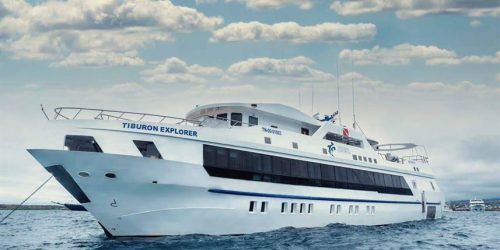 | Review: MV Tiburon Explorer; Book: MV Tiburon Explorer | 9.7 Exceptional | from £518; $747; €698 |
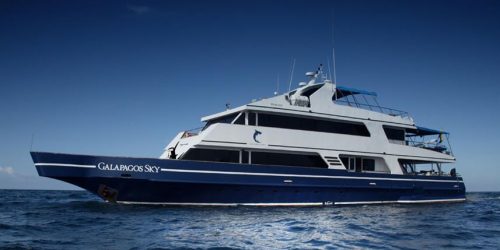 | Review: MV Galapagos Sky; Book: MV Galapagos Sky | 9.5 Exceptional | from £708; $864; €807 |
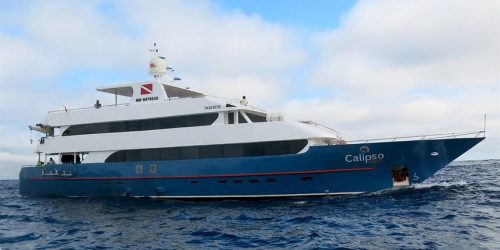 | Review: MV Calipso; Book: MV Calipso | 9.4 Superb | from £470; $803; €750 |
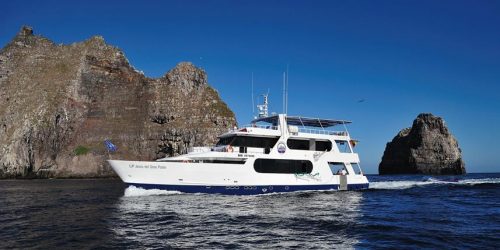 | Review: MV Galapagos Aggressor III; Book: MV Galapagos Aggressor III | 9.1 Superb | from £511; $623; €583 |
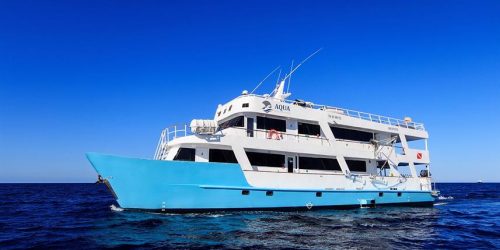 | Review: MY Aqua; Book: MY Aqua | 9 Superb | from £457; $558; €521 |
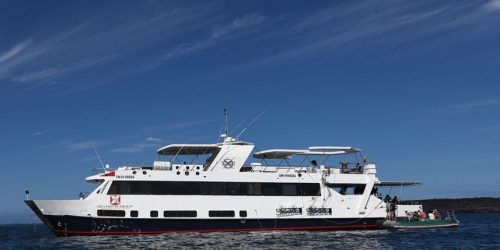 | Review: MV Humboldt Explorer; Book: MV Humboldt Explorer | 8.9 Fabulous | from £489; $597; €557 |
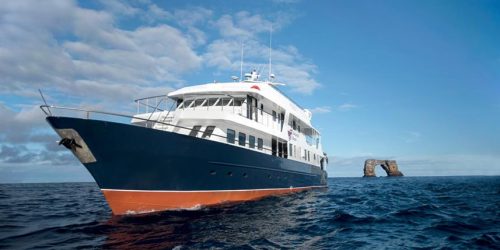 | Review: MV Galapagos Master; Book: MV Galapagos Master | 8.6 Fabulous | from £459; $560; €523 |
- 1
- 2
Note: The above “Price Per Day” was correct at the time of producing this article, as was the exchange rate used to convert the GBP cost to US Dollars and Euros. For an up-to-date cost for your chosen liveaboard, please visit the “Book” link above.
Galapagos Islands Liveaboard Dive Sites
Punta Carrion Diving
Punta Carrion is on the west of Santa Cruz Island and in most case is the first stop for Galapagos dive liveaboards.
Punta Carrion is known for having fun scuba diving with Galapagos sea lions. Galapagos sea lions are known for being playful with divers and you may find your fins being tugged from behind by a mischievous sea lion. Divers may also see eagle rays, white tip reef sharks, with the chance to see hammerhead sharks and even dolphins.
Punta Carrion is for easy diving and perfect for beginner divers, as the current is usually mild. The visibility is normally around 10 meters (33 feet) at Punta Carrion. As the diving in Galapagos is amazing, you’ll want to make your dives last as long as possible (See my 22 tips on conserving your air), but then it’s also recommended to dive with Nitrox too, which will help you extend your dive times.
Galapagos liveaboards offering dives in Punta Carrion include: Galapagos Aggressor, Galapagos Master, Humboldt Explorer and the Nortada.
Wolf and Darwin Island Diving
Galapagos liveaboards bound for Wolf and Darwin islands sail overnight from the nearest liveaboard departure port, which is why the only way to dive there is by dive liveaboard.
Making the trip to these isolated islands of the Galapagos Islands will not disappoint, as this is where you’ll experience the mega schools of scalloped hammerhead sharks, which are en-route to the Cocos Islands.
You will also see silky sharks, Galapagos sharks, manta rays, dolphins, spotted eagle rays, orcas and whale sharks from June to November.
Be prepared to experience rough sea conditions at Wolf and Darwin Islands with high swells. So be mindful if you’re going suffer from seasickness on the liveaboard before you commit booking a Galapagos liveaboard trip.
You will need to have dived at least 50 dives and hold an advanced open water certification to dive Wolf and Darwin, as the currents can be so strong and many of the dives are drift dives. Most of the dives are to 30-meters (100 feet).
Galapagos liveaboards offering dives to Wolf and Darwin Islands include: Galapagos Aggressor, Galapagos Master, Humboldt Explorer, Galapagos Sky, Calipso, Aqua and Nortada.
Cabo Douglas Diving
If it’s the marine iguanas you want to dive with, Cabo Douglas is the place to see them.
Cabo Douglas is on the eastern side of Fernandina Island. In addition to seeing the marine iguanas feeding on the algae growing on the underwater rocks, you also see the flightless cormorants, Galapagos penguins and possibly seahorses.
The dives at Cabo Douglas are mostly less than 26 metres (85 feet) deep.
Best time to dive the Galapagos Islands
The diving in Galapagos is year round, but depending on when you dive you will experience two distinct seasons.
The warm season in the Galapagos Islands
The warm season in Galapagos is from December through May. Water temperatures during the warm season range from 23-25°C (75-80°F). If you suffer from seasickness, this is a better time to go as sea conditions are calmer, there are also less currents at this time of year too.
The warm season in Galapagos is the best time to see large numbers hammerheads, silky sharks and Galapagos sharks.
The cool season in the Galapagos Islands
The cool season in Galapagos is from June through November. Water temperatures during the cool season range from 16-18° (60-65°F), so you may want to dive in a drysuit instead of using a wetsuit.
It is at this time of year when sea conditions are at their roughest, and also when you’ll experience strong currents too. This will make the diving more challenging, and is why it’s only suitable for advanced open water divers with 50+ dives.
During cool season is when you are likely too see whale sharks at Darwin and Wolf Islands. Whilst there are less hammerheads in the cool season, you will still likely see large schools of scalloped hammerheads together with silkys and Galapagos sharks too.
How to get to Galapagos Islands
How you get to the Galapagos Islands will depend on where you are beginning your journey. Here are a few popular locations and how to get to the Galapagos Islands:
- How to get to Galapagos from Los Angeles.
- How to get to Galapagos from NYC.
- How To Get To Galapagos From Ecuador.
- How To Get To Galapagos From Hong Kong.
- How To Get To Galapagos From UK.
- How To Get To Galapagos From Sweden.
I hope you enjoyed this page about Galapagos liveaboard diving
I’d love to hear from you. Tell us about your adventures of diving and snorkeling, in the comments below. Please also share your photos. Either from your underwater cameras or videos from your waterproof Gopro’s!
If this article hasn’t answered all of your questions. If you have more questions either about snorkeling or scuba diving (or specifically about Galapagos liveaboard diving), please comment below with your questions.
There will also be many more articles about scuba diving (and snorkeling) for you to read and learn about these fabulous sports.
Have fun and be safe!
Select Another Liveaboard Location
| All Liveaboard Locations |
| Specific Liveaboard Locations |
